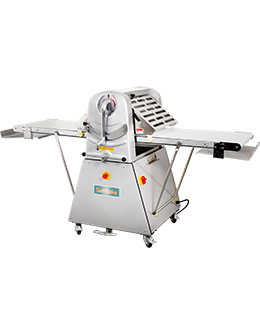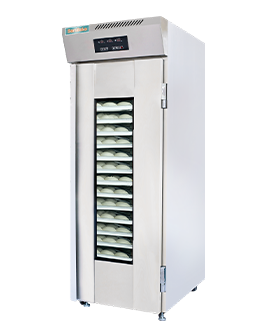Dough Divider & Rounder
Introduction to Dough Divider & Rounder

What is a Dough Divider?
What is a Dough Rounder?
Why Combine Both Machines?
The Importance of Dough Dividing and Rounding in Baking
Achieving Consistent Portions
Uniform dough size means even baking. No one wants a batch where some buns are soft and perfect while others come out rock-hard or undercooked.
Boosting Production Speed
These machines let you process hundreds—even thousands—of pieces in a fraction of the time it would take manually.
Reducing Manual Labor and Fatigue
Bakers can focus more on the creative process and less on repetitive handwork that can lead to fatigue or injury.
Types of Dough Dividers
Manual Dough Dividers
Perfect for small bakeries or artisan setups. They require some elbow grease but are cost-effective.
Semi-Automatic Dough Dividers
These offer a balance of labor savings and affordability. Great for growing businesses.
Fully Automatic Dough Dividers
These are the heavy-duty champs. Set it, forget it, and watch the magic happen.
Types of Dough Rounders
Cone Rounders
These rotate the dough around a central cone—great for standard bread or rolls.
Belt Rounders
Use moving belts and guides to shape dough. They’re quieter and ideal for softer doughs.
Drum Rounders
Perfect for high-moisture or sticky doughs. They tumble the dough gently into perfect spheres.
Integrated Dough Divider and Rounder Systems
How Integrated Systems Work
They link the dividing and rounding stages into one flow. Dough goes in as a lump and comes out as perfect balls.
Benefits for Medium to Large Bakeries
This combo minimizes handling, reduces contamination risk, and maximizes efficiency.
Key Features to Look for in Dough Dividers & Rounders
Capacity and Output
Choose based on how much dough you process daily. Look for machines that match your bakery’s scale.
Adjustability and Versatility
Some machines handle multiple sizes and dough types with simple tweaks.
Cleaning and Maintenance Ease
Look for easy-to-remove parts and stainless steel bodies. Nobody likes scrubbing dough gunk for hours.
Applications in Commercial Bakeries
Bread Production
White bread, whole wheat, rye—these machines handle it all.
Pizza Dough Processing
Portioning and rounding are essential for that perfect pizza base.
Artisan Baking Uses
Brioche, buns, and more—machines maintain the artisanal look without sacrificing speed.
Materials and Design Considerations
Stainless Steel vs. Cast Iron Construction
Stainless is hygienic and easier to clean. Cast iron is more robust but heavier.
Safety Features for Food Handling
Make sure your machine is compliant with local food safety standards and includes safety guards.
Common Issues and Troubleshooting
Sticky Dough Problems
Use flour or oil sprayers, and adjust humidity settings if available.
Uneven Rounding or Dividing
Check blade sharpness and belt settings.
Noise and Maintenance Challenges
Lubricate moving parts and keep the machine clean to avoid unnecessary wear and tear.
Cost Analysis: Is It Worth the Investment?
ROI for Small vs. Large Bakeries
For larger setups, it’s a no-brainer. Smaller bakeries should weigh the long-term labor savings.
Leasing vs. Buying
Leasing helps with cash flow but might cost more in the long run.
How to Use a Dough Divider & Rounder Efficiently
Step-by-Step Operating Guide
-
Prepare the dough
-
Place it in the divider hopper
-
Activate the machine
-
Transfer to rounder (or auto-feed)
-
Collect uniform dough balls
Maintenance Tips
Clean daily, check for wear weekly, and service quarterly.
Popular Brands and Models on the Market
Top Picks for Beginners
-
Erika Record Semi-Auto Divider
-
Dutchess Manual Divider
Professional Grade Machines
-
Vemag Dough Divider & Rounder
-
Sottoriva Automatic Line
Comparing Dough Divider & Rounder with Other Methods
Traditional Hand Dividing and Rounding
Great for passion projects, not for volume.
Standalone Dividers or Rounders
If budget is tight, starting with one machine can still make a big difference.
Future of Dough Processing Equipment
Innovations in Automation
Expect AI and sensors to play a bigger role in adjusting for dough consistency and size.
Eco-Friendly and Energy-Saving Designs
More machines now come with energy-efficient motors and recyclable components.
Conclusion
If you're in the baking business and tired of inconsistent dough balls, sluggish output, or worn-out arms, it’s time to level up. A dough divider & rounder isn’t just a tool—it’s your bakery’s best friend. Whether you're making soft rolls, artisan loaves, or pizza bases, these machines take care of the grunt work, so you can focus on the craft.
FAQs
What kind of dough works best with divider-rounders?
Most bread, pizza, and bun doughs work well—though very wet or sticky doughs may need specialized models.
Can I use a dough divider & rounder for gluten-free dough?
Yes, but be sure the machine handles the texture. Some sticky doughs may require extra flour or oil.
How do I clean the machine?
Most parts are removable. Use food-safe cleaner and a damp cloth. Avoid harsh chemicals.
What size bakery needs a divider-rounder?
Even small bakeries benefit. If you're making 100+ dough balls a day, it's worth considering.
Are there budget options available?
Yes! Manual and semi-auto machines can be surprisingly affordable, even for startups.
- *Name
- *Title
- *Content
- Name:
- Vickey
- Tel:
+86-18862554041
- Email:
- sales@sambake.com
- Address:
- Xinxiang Industrial Park,Wuxi City,Jiangsu China






